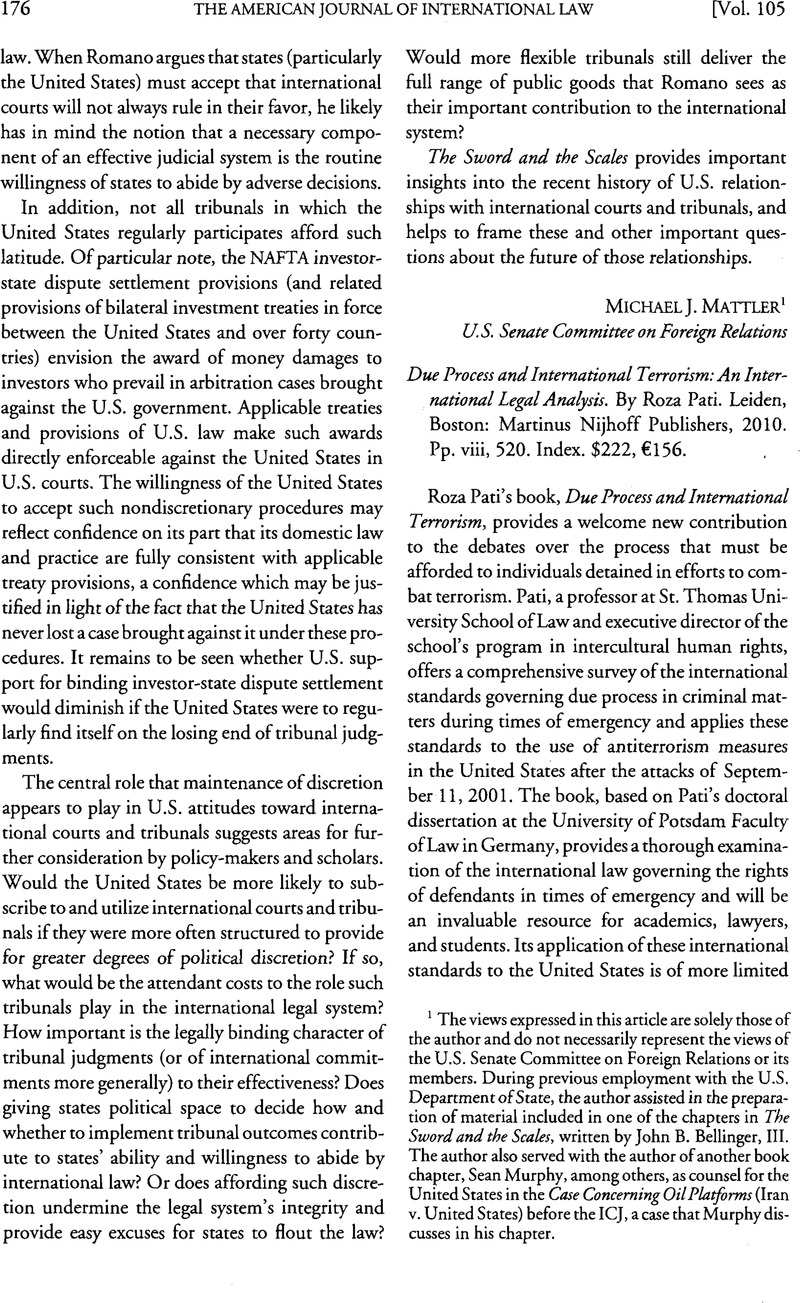No CrossRef data available.
Published online by Cambridge University Press: 02 March 2017

1 See generally Langer, Maximo, From Legal Transplants to Legal Translations: The Globalization of Plea Bargaining and the Americanization Thesis in Criminal Procedure, 45 Harv. Int’l L.J. 1 (2004)Google Scholar; Diane Marie, Amann, Harmonic Convergence? Constitutional Criminal Procedure in an International Context, 75 Ind. L.J. 809 (2000)Google Scholar; Bradley, Craig M., The Convergence of the Continental and the Common Law Model of Criminal Procedure, 7 Crim. L.F. 471 (1996)CrossRefGoogle Scholar (book review).
2 See, e.g., Hakimi, Monica, International Standards for Detaining Terrorism Suspects: Moving Beyond the Armed Conflict-Criminal Divide, 33 Yale J. Int’l L. 369 (2008)Google Scholar; Satterthwaite, Margaret L., Rendered Meaningless: Extraordinary Rendition and the Rule of Law, 75 Geo. Wash. L. Rev. 1333 (2006–2007)Google Scholar; Rona, Gabor, Interesting Times for International Humanitarian Law: Challenges from the “War on Terror,” 27 Fletcher F. World Aff., Summer/Fall 2003, at 55 Google Scholar.
3 See, e.g., Neve, Alex, Omar Khadr trial—worst fears confirmed in pre-trial hearing, Llvewire (Amnesty Int’l) (Aug. 10, 2010), at http://livewire.amnesty.org/2010/08/10/omar-khadr-trial-%E2%80%93-nosecurity-without-human-rights/ Google Scholar.
4 See McNeal, Gregory S., A Cup of Coffee After the Waterboard: Seemingly Voluntary Post-Abuse Statements, 59 Depaul L. Rev. 943, 973–74 (2010)Google Scholar (noting that factors include “the nature of the previous unlawful interrogation, the lapse of time between statements, whether there was a change in location, and whether there was a change in the identity of the interviewer”).
5 Lawless v. Ireland, 1 Eur. Ct. H.R. (ser. A) (1961).
6 Pati, Roza, Rights and Their Limits: The Constitution for Europe in International and Comparative Legal Perspective, 23 Berkeley J. Int’l L. 223 (2005)Google Scholar.
7 International Covenant on Civil and Political Rights, Art. I4(3)(c), Dec. 16, 1966, 999 UNTS 171.
8 Yuval Shany calls treaty provisions that provide states with discretion in implementation “standard-type norms.” Shany, Yuval, Toward a General Margin of Appreciation Doctrine in International Law?, 16 Eur. J. Int’l L. 907, 914 (2005)CrossRefGoogle Scholar.
9 Joined Cases C-402/05 P & C-415/05 P, Kadi v. Council (Eur. Ct. Justice Sept. 8, 2008).
10 See Giacinto della, Cananea, Global Security and Procedural Due Process of Law Between the United Nations and the European Union: Yassin Abdullah Kadi & Al Barakaat International Foundation v. Council, 15 Colum. J. Eur. L. 511, 524 (2009)Google Scholar. This approach is similar to that of the Supreme Court in Hamdi v. Rumsfeld, where the Court held that the process due to an American citizen detained in Afghanistan required balancing the private interest affected by the detention, the state’s interest, and the burdens associated with process. 542 U.S. 507, 528–29 (2004); see also Mathews v. Eldridge, 424 U.S. 319 (1976)Google Scholar.
11 Kadi, paras. 338–41, 352.
12 See, e.g., Marco, Sassòli, Terrorism and War , 4 J. Int’l Crim. Just. 959 (2006)Google Scholar; Jinks, Derek, September 11 and the Laws of War, 28 Yale J. Int’l L. 1 (2003)Google Scholar.